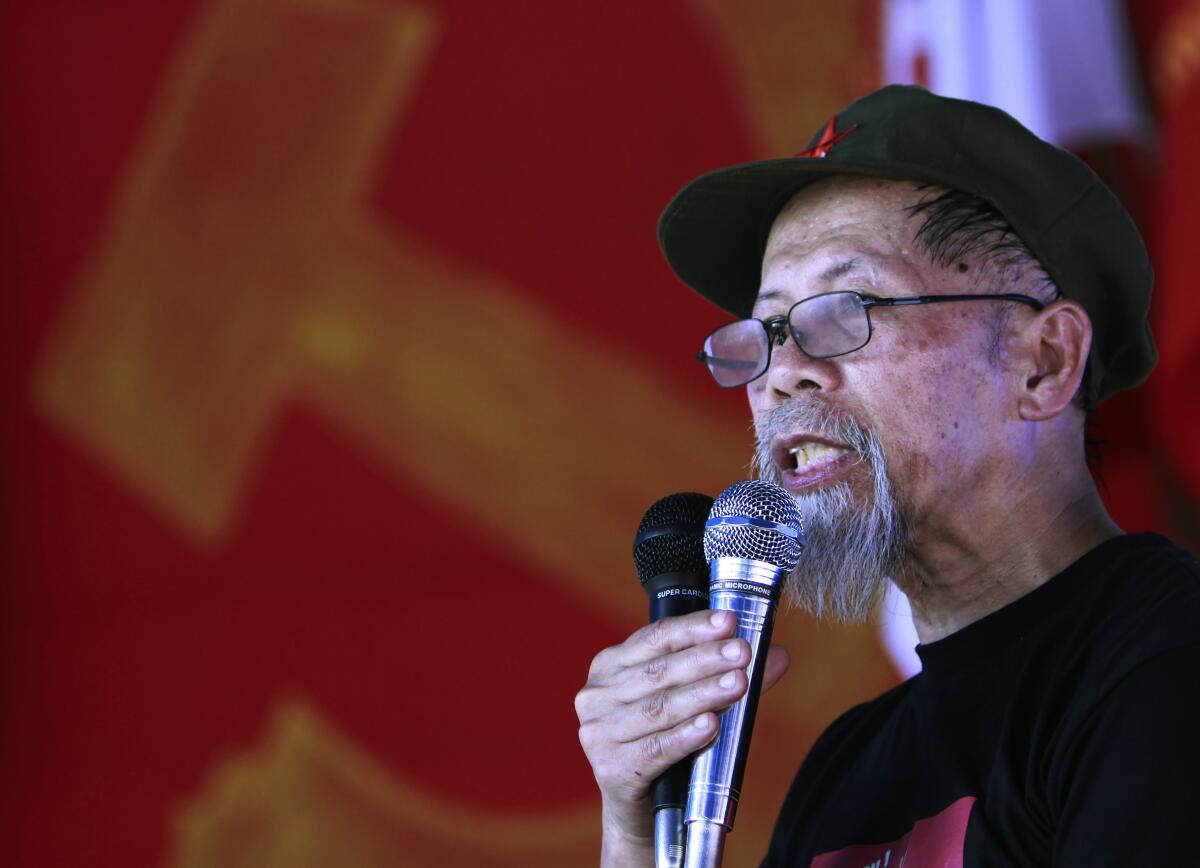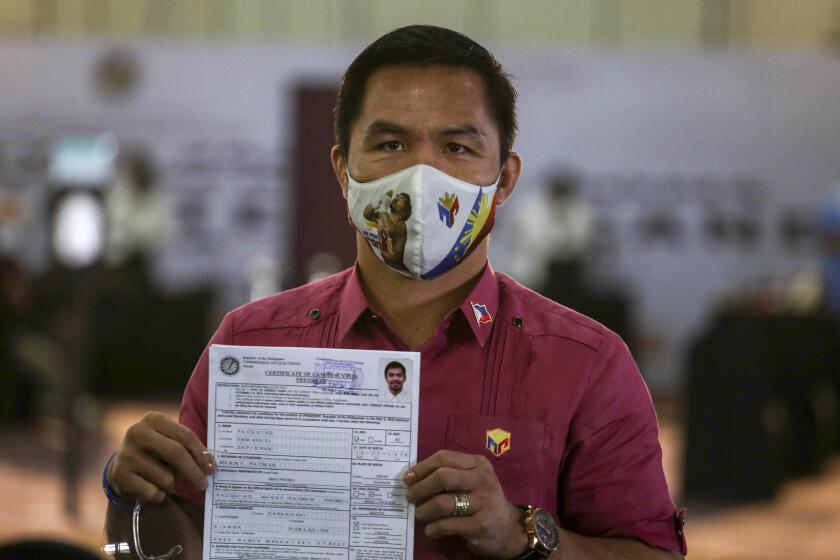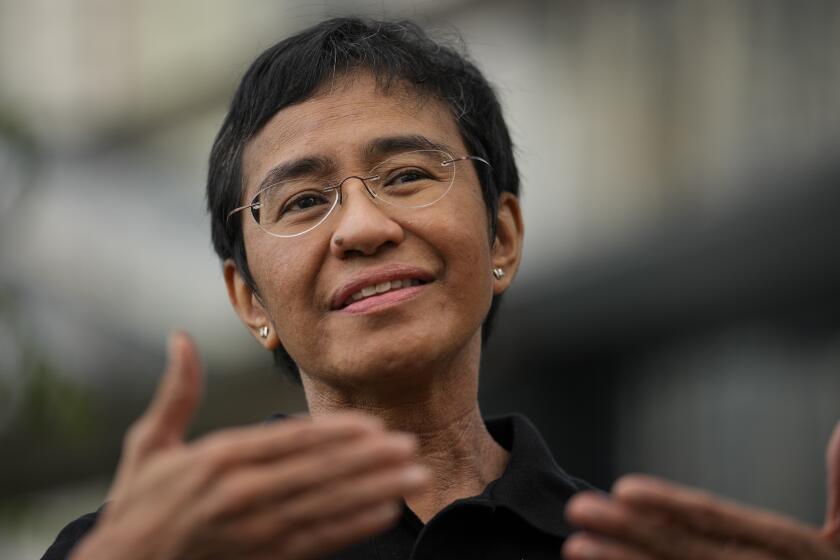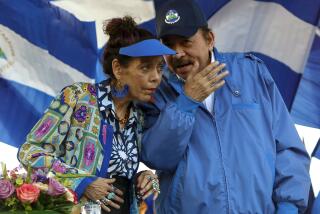Key leader of decades-old insurgency in the Philippines is killed

MANILA — Philippines forces have killed a key rebel commander in one of Asia’s longest-running insurgencies, in what the military described as a daring raid in the country’s remote southern region but what guerrilla leaders said was an ambush.
Jorge Madlos, who used the nom de guerre Ka Oris, was for many decades a leading figure and spokesman for the communist fighters in the southern Philippines’ mountainous hinterlands.
Philippine Defense Secretary Delfin Lorenzana on Monday said government forces killed Madlos in Bukidnon province Saturday. He described Madlos’ death as a major blow to the already-battered New People’s Army guerrilla group.
Regional military commander Maj. Gen. Romeo Brawner said villagers tipped off the military to the presence of about 30 rebels who were holding discussions with residents in a far-flung village near Impasug-ong town. Fighter planes were deployed to fire rockets on the rebel positions, which the military said was protected by land mines, before a ground assault was ordered.
After a gun battle that raged for less than an hour, troops found the bodies of the 72-year-old Madlos and his medical aide, their assault rifles and ammunition, Brawner said.
“Justice has been served for those innocent civilians and their communities he terrorized for several decades,” Brawner told reporters.
Newly retired boxing legend Manny Pacquiao has filed his candidacy for the Philippine presidency ahead of elections in May.
The guerrillas, however, said in a statement posted on a website linked to the group that the long-ailing Madlos was traveling with a rebel medic on a motorcycle to get medical treatment when government forces gunned them down. The rebels said both Madlos and his companion were unarmed and added that no military airstrike or gun battle took place.
Military commanders have blamed Madlos and his forces for years of deadly assaults against security forces, as well as attacks on mining companies, pineapple and other agricultural plantations to extort money, or what the guerrillas call “revolutionary taxes,” from local- and foreign-owned businesses.
Madlos was blamed by the military for helping to plot a 2011 attack by more than 200 guerrillas on three nickel mining complexes in southern Surigao del Norte province. Rebels ransacked the site after disarming guards and holding several employees at gunpoint.
One of the companies that came under attack was the country’s biggest nickel producer, partly owned by Japan’s Sumitomo Corp. It was forced to temporarily halt operations following the raid.
The Philippine government has belatedly congratulated investigative journalist Maria Ressa for winning this year’s Nobel Peace Prize.
Madlos was a student activist who quit a university and went underground after then-Philippine dictator Ferdinand Marcos declared martial law in 1972. Distinguished by his trademark Mao-style cap, goatee and folksy manners, Madlos stuck it out with the insurgency even after falling ill more than a decade ago.
In an interview with the Associated Press in 2010 from a rebel mountain camp in the south, he said that only one thing could make him leave his comrades.
“Our retirement comes in death,” Madlos said then.
The military says there are still about 3,500 to 4,000 communist fighters despite years of rebel setbacks, surrenders and factionalism. Peace talks brokered by Norway collapsed between President Rodrigo Duterte’s administration and the guerrillas after both sides accused each other of renewed deadly attacks.
More to Read
Sign up for Essential California
The most important California stories and recommendations in your inbox every morning.
You may occasionally receive promotional content from the Los Angeles Times.












